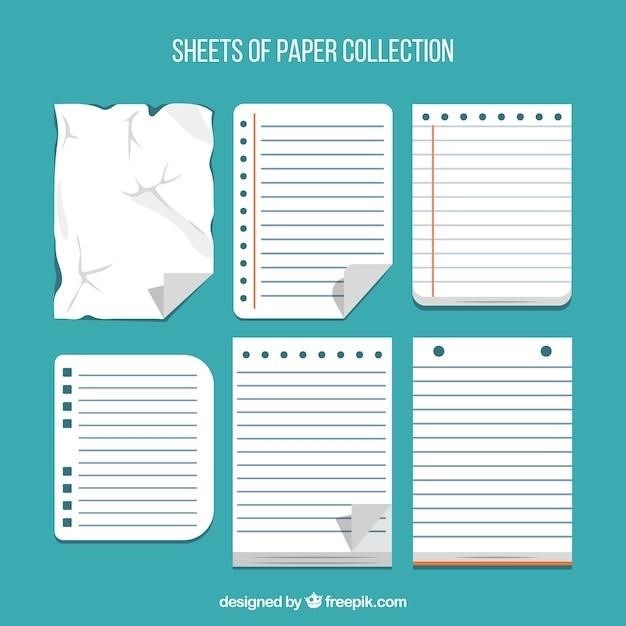
birp notes pdf
BIRP Notes⁚ A Comprehensive Guide for Mental Health Professionals
BIRP notes are a specific format for writing progress notes as a behavioral health clinician. They contain four sections⁚ behavior‚ intervention‚ response‚ and plan.
This type of note template allows the provider to focus on therapeutic interventions‚ and how the client responds to them. For this reason‚ they can be very useful if one of your primary treatment goals is to track the effectiveness of specific techniques.
Because BIRP notes rely heavily on clinical theory‚ it can be a more challenging note format for newer clinicians especially if your goal is drafting notes quickly between sessions.
Your documentation for every session cant be⁚ I sat with a client and I listened‚ says Natalia Tague‚ LPC and Headways Clinical Engagement Lead. You have to note what you actually did clinically. What intervention did you use? What modality are you using? If you dont have a concrete theoretical framework‚ that part of writing notes is going to feel exhausting.
The four sections of a BIRP note encourage you to contemplate your clients behavior before and after therapeutic interventions‚ and look ahead to how the results from this session will inform future treatment.
What are BIRP Notes?
BIRP notes are a structured format for documenting client interactions in mental health settings. They stand for Behavior‚ Intervention‚ Response‚ and Plan‚ representing the four key areas covered in each note. BIRP notes provide a framework for clinicians to record observations‚ actions‚ responses‚ and future plans during therapy sessions or client interactions.
This note-taking system is designed to streamline documentation‚ enhance clarity‚ and ensure a consistent approach to recording client progress. By focusing on these specific areas‚ BIRP notes promote a more structured and systematic approach to documenting client care‚ which can be particularly beneficial for clinicians working within behavioral health frameworks or seeking to track the effectiveness of specific interventions.
The Structure of BIRP Notes
BIRP notes are organized into four distinct sections‚ each focusing on a specific aspect of the client interaction. These sections are⁚
- Behavior⁚ This section captures the client’s observable behaviors and presentation during the session. It might include details about their mood‚ affect‚ verbalizations‚ body language‚ and any relevant symptoms.
- Intervention⁚ This section outlines the specific therapeutic interventions used during the session. It could include techniques like cognitive restructuring‚ mindfulness exercises‚ relaxation techniques‚ or specific counseling strategies.
- Response⁚ This section documents the client’s response to the interventions. It might describe changes in their mood‚ behavior‚ or any insights gained during the session. Direct quotes from the client can also be included here.
- Plan⁚ This section outlines the plan for future sessions‚ including any adjustments to existing interventions‚ new techniques to be introduced‚ and goals for the next session.
This structured format allows clinicians to document the session in a clear and organized manner‚ ensuring that all key elements are captured and easily accessible for future reference.
Key Benefits of Using BIRP Notes
BIRP notes offer several advantages for mental health professionals‚ making them a valuable tool for documenting client progress and informing treatment plans. Some key benefits include⁚
- Focus on Interventions⁚ BIRP notes emphasize the specific therapeutic interventions used and their impact on the client‚ allowing for a clear evaluation of treatment effectiveness.
- Structured Organization⁚ The four-section format provides a logical framework for documenting key aspects of the session‚ ensuring that all essential information is captured in a concise and organized manner.
- Improved Communication⁚ Clear and concise documentation facilitated by BIRP notes enhances communication between clinicians‚ improving continuity of care and ensuring consistent treatment plans.
- Enhanced Client Understanding⁚ BIRP notes can help clients understand the therapeutic process by outlining the interventions used‚ their responses‚ and the plan for future sessions.
- Legal Compliance⁚ BIRP notes‚ when properly completed‚ meet the documentation requirements for many insurance companies and licensing boards‚ ensuring legal compliance.
These benefits make BIRP notes a valuable tool for mental health professionals seeking to improve the effectiveness and efficiency of their practice.
How to Write BIRP Notes
Writing effective BIRP notes requires a structured approach that captures the essence of the therapeutic session. Here’s a breakdown of the process⁚
- Prepare for the Session⁚ Before meeting with the client‚ review their previous notes and identify any relevant information for the current session. This will help you focus on specific areas to address and ensure continuity of care.
- Observe and Document⁚ During the session‚ pay attention to the client’s behavior‚ both verbal and nonverbal. Note any significant observations or changes in their presentation. It’s helpful to include direct quotes from the client whenever possible.
- Identify and Detail Interventions⁚ Clearly document the specific techniques‚ exercises‚ or strategies you used during the session. This includes therapeutic approaches‚ specific interventions‚ and any relevant materials used.
- Evaluate Client Response⁚ Observe the client’s reaction to the interventions. Note any changes in their behavior‚ mood‚ or emotional state. Include any insights or reflections shared by the client.
- Develop the Plan⁚ Based on the session’s observations and the client’s response‚ outline the plan for future sessions. This may include adjustments to existing interventions‚ new strategies‚ or goals for future work.
Remember‚ BIRP notes should be concise‚ objective‚ and focused on the therapeutic process.
Behavior Section
The Behavior section of a BIRP note is the foundation for understanding the client’s current state and how they presented during the session. This section should be a detailed and objective record of the client’s observable behavior‚ focusing on their mental and physical presentation.
Here are key elements to include in the Behavior section⁚
- Mental Status Exam⁚ Provide observations about the client’s appearance‚ mood‚ affect‚ speech‚ thought processes‚ and behavior. This section is like a snapshot of the client’s mental state during the session.
- Client Presentation⁚ Describe the client’s physical appearance‚ posture‚ eye contact‚ and any other noticeable behaviors. For example‚ did the client seem relaxed or tense? Did they maintain eye contact or avoid it?
- Verbal Communication⁚ Record the client’s speech patterns‚ including their tone of voice‚ volume‚ and any hesitations or interruptions. Note any specific statements or themes that emerged during the session.
- Emotional State⁚ Document the client’s emotional state‚ including their mood‚ affect‚ and any expressions of emotions. For example‚ did the client appear sad‚ anxious‚ angry‚ or happy?
The Behavior section sets the stage for understanding the client’s needs and the interventions that were used to address them.
Intervention Section
The Intervention section of a BIRP note is where you detail the specific therapeutic strategies and techniques employed during the session. It’s a record of what you‚ as the therapist‚ did to address the client’s needs and support their progress.
Here’s what to include in the Intervention section⁚
- Therapeutic Techniques⁚ List the specific techniques‚ activities‚ or tools used during the session. Examples include cognitive-behavioral interventions‚ mindfulness exercises‚ relaxation techniques‚ or other evidence-based approaches. This section is where you demonstrate your clinical skills and the rationale behind your choices.
- Counseling Strategies⁚ Document any counseling strategies used‚ such as active listening‚ reflective listening‚ or collaborative decision-making. These strategies are the foundation of building rapport and facilitating change.
- Crisis Management⁚ If the session involved addressing immediate safety concerns‚ note the crisis management interventions or safety planning discussions you employed. This ensures a clear record of how you handled any critical situations.
This section provides a concrete description of the therapeutic work done during the session‚ highlighting the therapist’s role in facilitating change.
Response Section
The Response section is the heart of a BIRP note‚ where you document the client’s reaction to the interventions provided during the session. It’s about assessing the effectiveness of your therapeutic work and how the client is engaging with the process.
Here’s what to include in the Response section⁚
- Emotional Responses⁚ Describe the client’s emotional responses to the interventions‚ both during and after the session. Did they show signs of increased anxiety‚ relaxation‚ frustration‚ or insight? These observations provide valuable information about the impact of your interventions.
- Behavioral Changes⁚ Note any observable changes in the client’s behavior‚ such as increased engagement‚ reduced avoidance‚ or improved coping skills. These changes demonstrate tangible progress made during the session.
- Client Feedback⁚ Document the client’s own feedback about the session. Did they find the interventions helpful? Did they feel understood? This is a crucial part of collaborative therapy and provides valuable insight into the client’s perspective.
- Insights and Reflections⁚ If the client shared any insights or reflections about their experiences during the session‚ document them here. These moments of self-awareness are often the catalyst for positive change.
The Response section captures the client’s experience of the therapeutic work‚ demonstrating the progress made and highlighting areas for further exploration.
Plan Section
The Plan section of your BIRP note outlines your roadmap for future sessions‚ focusing on how you will continue to support your client’s progress. It’s a space to document your strategic approach based on the insights gained during the current session.
Here’s what to include in the Plan section⁚
- Intervention Adjustments⁚ If you plan to modify or adjust any interventions based on the client’s response‚ detail these changes. This demonstrates your flexibility and responsiveness to the client’s needs.
- New Techniques⁚ Introduce any new techniques or skills you intend to explore in subsequent sessions. This could involve incorporating new therapeutic modalities‚ teaching coping skills‚ or exploring specific therapeutic approaches.
- Goal Setting⁚ If you and the client have established new goals for future sessions‚ outline these goals clearly. This ensures that both you and the client are aligned on the direction of therapy.
- Next Steps⁚ Provide specific instructions or recommendations for the client to follow between sessions. This could include completing assignments‚ practicing new skills‚ or scheduling follow-up appointments.
The Plan section outlines a clear path for continued therapeutic work‚ ensuring continuity of care and a structured approach to achieving the client’s goals.
BIRP Notes vs. SOAP Notes
BIRP notes and SOAP notes are both widely used documentation formats in mental health‚ but they differ in their structure and focus. SOAP notes‚ which stand for Subjective‚ Objective‚ Assessment‚ and Plan‚ are designed to capture a comprehensive picture of the client’s experience‚ including their subjective reports‚ objective observations‚ and the therapist’s assessment and plan.
BIRP notes‚ on the other hand‚ emphasize the therapist’s interventions and the client’s response to those interventions. They are a valuable tool for tracking the effectiveness of specific therapeutic techniques and for understanding how the client’s behavior changes in response to treatment.
While both formats have their strengths‚ the choice of documentation style often depends on the therapist’s individual preferences‚ theoretical orientation‚ and the specific needs of the client. Ultimately‚ the goal of any documentation format is to create a clear and accurate record of the therapeutic process‚ supporting effective treatment planning and communication among providers.
BIRP Notes Templates and Resources

There are various resources available to assist mental health professionals in creating and utilizing BIRP notes effectively. Numerous online platforms and websites offer downloadable BIRP note templates in PDF format‚ providing a structured framework for documenting client sessions. These templates often include sections for Behavior‚ Intervention‚ Response‚ and Plan‚ along with prompts and guidance for completing each section.
Furthermore‚ several software programs and electronic health record (EHR) systems have integrated BIRP note formats‚ streamlining the documentation process. These tools often offer features such as automated note generation‚ electronic signatures‚ and secure cloud storage. Additionally‚ professional organizations and online communities provide resources‚ such as articles‚ webinars‚ and forums‚ dedicated to BIRP note writing and best practices.
By utilizing these resources‚ mental health professionals can ensure their BIRP notes are comprehensive‚ accurate‚ and compliant with industry standards‚ ultimately contributing to the provision of high-quality client care.